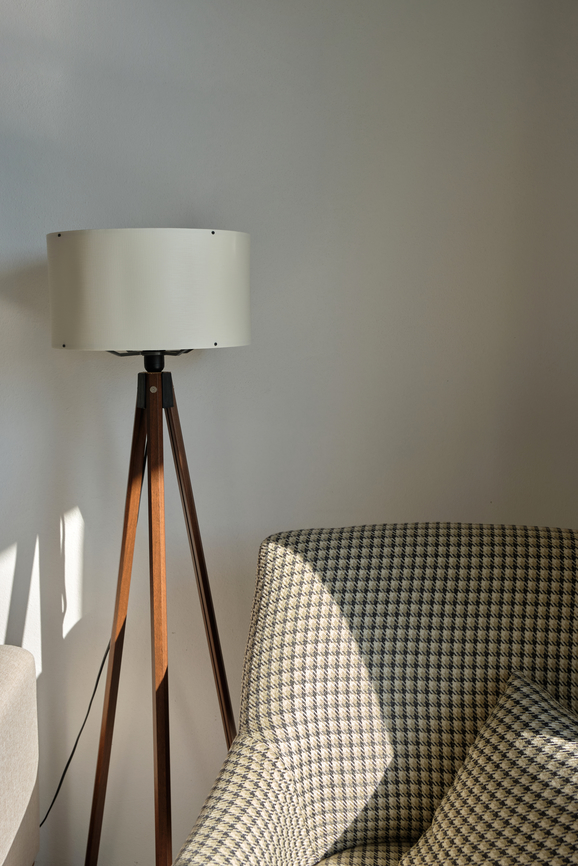
How To Show Up For Others—And Other Things I Learned From My Son’s Cancer Diagnosis
I am trying to get my four children ready for school when I find my seven-year-old son Phoenix slumped on the cold tile of the bathroom floor, a towel over his back, sobbing because his stomach hurts so badly. I lift him under the armpits, help him hobble upstairs, tell him we will go to Urgent Care as soon as I drop the other kids at school, and leave him to get his clothes on while I pack lunches and stuff backpacks; he seems better by the time we get in the car. At Urgent Care, they do bloodwork, a strep test, check for a urinary tract infection, all the things they’ve been doing since he started complaining of stomachaches over a year ago. Everything is fine. The doctor begins the routine physical exam. I am on my phone canceling meetings when she looks at me oddly and says, “Come here.”
I walk over and stand next to my boy who is lying on the exam table. “Feel this,” she says and puts my hands next to hers, resting them on Phoenix’s taut little tummy, the same belly I rubbed last night while we snuggled and watched a family movie. She leads my fingers around the outline of a thing almost as big as his stomach, her eyes never leaving mine. I feel something hard and firm, like I did when he was in my belly and I would cup my hands around the lump that was his body. And then, like the final sentence of the conversation we never had out loud, she says, “I need you to go to the ER right now.”
“And then, like the final sentence of the conversation we never had out loud, she says, ‘I need you to go to the ER right now.'”
The nurse returns, carrying a prize basket, a feeble offering. Phoenix’s face lights up as he picks a tiny maze with a silver ball and a little blue man strapped to a parachute. He asks if he can have one more thing. “You can have as many toys as you want,” she replies. Her compassion makes this real.
Within 48 hours, Phoenix is under anesthesia for a biopsy, a catheter, stents, a spinal tap, and the insertion of a central line port. After surgery, they send us home for two days. When we return, they tell us Phoenix has a Mature B-Cell non-Hodgkin’s Burkitt like Stage 3 lymphoma. It’s aggressive—fastest to grow. But hey, good news, that means it’s also the fastest to die. The plan? Obliterate his body to within an inch of his life in order to save his life. He starts chemo the next day.
I quit both my jobs, staying for weeks at a time in the hospital while my husband keeps teaching high school, keeps parenting our other three kids, and travels an hour each way on any weeknight and weekend he can get away to help. We made it through this time (Phoenix is now almost four years in remission) because we had a Community of Care.
The term “Community of Care” is relatively new but in essence, it’s a place where you can be cared for in all of your humanness by other humans who have your back, no matter what. It’s like the vaccine to prevent, and the medicine to heal, loneliness.
“A ‘Community of Care’ is a place where you can be cared for in all of your humanness by other humans who have your back, no matter what.”
The poet Gwendolyn Brooks defined our longing for a Community of Care so beautifully when she said, “We are each other’s harvest; we are each other’s business; we are each other’s magnitude and bond.”
But then there is the question: how? How do we make each other our business? I don’t have a recipe that would work for everyone, but what I do have are ingredients–the things I learned from being on the receiving end of radical care.
Note: Having a Community of Care is not just for moments of crisis (if we go down this road of creating a hierarchy of suffering, we will get hung up on what qualifies as “crisis” and never ask for or offer help). Any kind of transition, whether planned or unplanned, difficult or joyful, is a great time to show up as a Community of Care, i.e.: new jobs, loss of jobs, new human babies and fur babies, new homes, new primary partners, loss of a primary partner, health challenges, planned surgeries, loss of loved ones, financial loss, natural disasters.
How To Create A Community Care Plan
This is like a User Guide to your life. I did not have one of these, but I found out later someone (I honestly still don’t know who it was) made one for my family. People looked at my life and made categories of help, and then other people signed up to help according to what they had in expertise and in abundance. It included things like important contact info/emergency numbers, names of favorite takeout places and coffee shops, food preferences/allergies for a meal train, instructions for caring for my pets; since I have kids, it listed out kid sports, school pickup times, carpool needs.
It also included a column called “What can I offer?” and here are things people wrote: cozy socks, home organization, once-a-week cleaning, whole house mold testing, epic playlists, weird cat videos, outings for her kids, repair work, yard work, prayers, energy work, acupuncture, veggies from my garden, a juicer, essential oils. One of my family members acted as liaison between me and the Care Plan, checking in daily to see what was needed, and then communicating those needs to whomever had offered something in that category.
“Having a Care Plan is the answer to the all-pervasive question, ‘What can I do to help?'”
Having a Care Plan is the answer to the all-pervasive question, “What can I do to help?” which, while well-meaning, isn’t usually a helpful question since the person going through the transition likely doesn’t have the bandwidth to discern what is needed and then be able to communicate those needs. Here’s what I suggest:
Think of what you would want if you were going through a transition, and then do that thing for the person you want to help. One of my friends who knows the power of a good meal set up our Meal Train, and (genius tip) made sure a cooler sat on my front porch so that when I came home exhausted from the hospital and trying to protect Phoenix from germs, I didn’t have to make small talk, or cry and then feel guilty that they were comforting me, or have them cry and then feel guilty that I was comforting them. I could just receive. Another friend who is good with money set up our GoFundMe; another friend took all the posts I put on Instagram and translated them over to a CaringBridge site so that I did not have to manage more than one platform of communication.
A friend who knows the power of a “porch drop” would leave random things at my front door—a specialty coffee, a ball jar filled with flowers from her garden, a t-shirt from a local boutique with an anatomical picture of a heart and the words “Weapon of Mass Compassion” (I wore that shirt every time I had to do some hard-core advocacy for my son). It didn’t matter what she left; it mattered to have a tangible reminder that I was not alone.
Don’t let perfection keep you from presence. When we see someone going through transitions, we want so badly to do the right thing and help in the most perfect way possible. Trying to get helping “right” can often keep us from doing anything. Because I had a seven-year-old with cancer, it was easy for people to buy Phoenix toys and educational games, and to send us money to help pay for hospital bills.
But what about when someone’s dog dies? Do you give money? That seems callous. We, as the helpers, get stuck because we think we should be able to intuit exactly what is needed.
This is especially true when someone we love is suffering—we want to make it better but we don’t know how to make it better so we don’t do anything because we’re afraid of making it worse.
“We want to make it better but we don’t know how to make it better so we don’t do anything because we’re afraid of making it worse.”
During Phoenix’s cancer, one of my friends named Sara texted me weekly paragraphs of encouragement—lines from poems, reminders to breathe, to love myself, to scream in the shower if I needed to. She never once tried to give me a silver lining; she didn’t tell me “what doesn’t kill you makes you stronger,” or “everything happens for a reason,” or “all things work together for good.” She stood shoulder to shoulder with me at the edge of the abyss and held my hand while I stared into the void, and when things got really awful, she held my hand tighter and did not turn away from the darkness.
Sara helped me, not because she magically figured out the right thing to do, but because she knew what every child knows who has ever skinned a knee and had it healed with a kiss; we don’t need someone to make it better, we just need someone to show up.
Offering help can be as scary as asking for help. We don’t want to offend by assuming someone is in need. After all, we are steeped in the American myth of the “self-made man,” the “pull yourself up by your bootstraps” fabricated narrative of hyper individualism that makes us feel like we have to have it all together all the time (according to some arbitrary definition of “having it together”) and if we don’t, something is wrong with us.
But we are made to make each other our business. We heal in community, we celebrate in community, and we hold each other in community when things are hard. It’s one of the only things that still makes sense in this fractured world.
Like Ram Dass says, “We are all just walking each other home.”
Trinity Wilbourn is a Denver-based freelance writer, mind/body coach and intuitive guide. As an educational consultant, she works at the intersection of Social Emotional Learning, Mindfulness, and the science of nervous system regulation. In her free time, she can be found hanging with her four kids, spooning her Bernedoodle, singing opera, and dancing in the kitchen. Learn more and explore her offerings at www.trinitywilbourn.com or follow her on Instagram.




